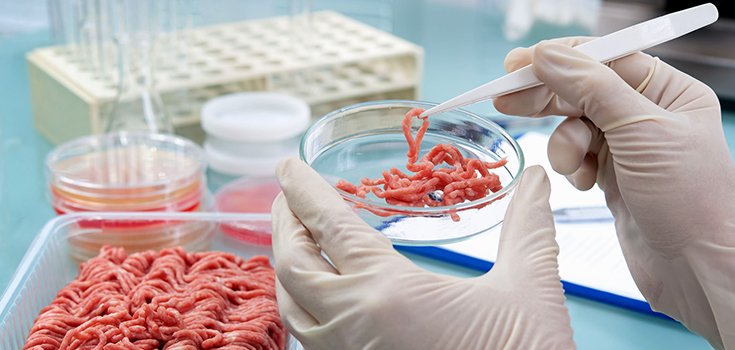20-30 Years From now, Burgers Might Come From a Test Tube

Would you eat a hamburger that was grown in a test tube at a lab? This method of creation may even be used as a selling point someday.
Biotech fake foods are the nauseating wave of the future, and for just under $12, you can try a test-tube burger. Well, if the burgers were actually on the market.
Mark Post, a researcher at Maastricht University in the Netherlands, announced last July that he had created a burger made from 20,000 strips of beef muscle tissue grown in a lab. At the time, the edible science project came with a $325,000 price tag, but the price has dropped significantly since then. [1]
The idea behind the burgers, as is usually the case, is to cut down on environmental damage caused by the livestock industry.
Environmentalists have been calling on Americans to eat less meat for years, with very dedicated and often adamant individuals saying one of the keys to saving the earth is partaking in a vegan diet.
Recent studies have shown that 51% of greenhouse gases are emitted by livestock – more than all of the cars, trucks, airplanes, trains and ships in the world combined.
As Gidon Eshel, a geophysicist at Bard College in Annandale-On-Hudson in New York told the American Association for the Advancement in Science’s magazine in August, “Now we can say, only slightly fancifully: You eat a steak, you kill a lemur in Madagascar. You eat a chicken, you kill an Amazonian parrot.”
Scientists also say our dinner-on-legs is also zapping precious water and food sources from the earth.
But is this the way to solve the proposed problem?
Post’s company, Co. Exist, described the experiment in 2013 like this:
“Post’s cultured meat creation process goes something like this: myosatellite cells, a kind of stem cell that repairs muscle tissue, are taken from a cow neck and put in containers along with fetal calf serum (the medium, which will eventually switch to a non-animal source).
The cells are placed onto gel in a plastic dish, where the calf serum’s nutrients are reduced, triggering the cells to go into starvation mode and split into muscle cells. Those cells eventually merge into muscle fibers called myotubes and start synthesizing protein. The end product is a tissue strip, described by the New York Times as “something like a short pink rice noodle.” [2]
Will people really eat meat that “grew up” in a lab?
Post says:
“That’s something that time will heal, that if you have people who are early adopters and will eat something that’s coming out of the lab then it will become more accepted … Kids don’t even blink and ask ‘when can we try it?’” [3]
He’s probably right. Kids probably don’t understand what “test-tube meat” really means, and besides, they eat hot dogs, and hot dogs are loaded with scary stuff. But that doesn’t mean parents are going to hop onboard with the idea of feeding their kids burgers birthed in a petri dish.
Back in April, Post and his team said they were working to replace the serum with something that doesn’t rely on animal products. No word on what that might be. One can only hope it’s plant-based.
It’s neither cheap nor easy to produce test-tube meat for the masses. That $11 burger still costs Co. Exist about $80 per kilogram.
It will be another 20-30 years before you can buy this man-made meat in a grocery store, though I’m not sure you’d want to.
Sources:
[1] Science Alert
[2] Fast Company
[3] Vice
